The following is a “publication-friendly” edit of my Monte Shelton write-up for the “Jag Mag” a monthly put out by the Seattle Jaguar Club. It is still in progress as I whittle it down from my usual verbose report. I started off with ~5000 words and hope to get it down to close to 1000. I’ll pick a few good photos to accompany it as well. Check back often.
My father and I have been TSD (Time, Speed, Distance) rallying now for over eleven years and you would think by now that we’d figure out how. The one thing we have learned is that when we’re on, we’re on. But… when we’re off, we’re REALLY off. For the past three summers we’ve attended two, highly competitive vintage TSD rallies together in the Pacific Northwest. Every June we join the Classic Motorcar Rally, and every August we’ve run down to Oregon to participate in the Monte Shelton Northwest Classic. Both events provide formidable challenges for the vintage rallyist, while being great fun for all.
We’ve settled into the roles of myself at the wheel as Driver (and under the bonnet as Mechanic); and my father, Charlie Goolsbee doing all the really hard work in the Navigator’s seat. We’ve done well, with constant improvement in our finish positions each year. Our best run at the Monte Shelton was last year; we finished 9th out of 80 cars. In our June effort at the Classic Motorcar Rally we blew the first morning, becoming lost on the second segment and spending the rest of the rally recovering. We feel very confident about the 2009 Monte Shelton. They’ve altered the format a bit, making it easier: there will only be ONE, non-hidden checkpoint per TSD segment.
The key to our success will be to STAY ON COURSE.
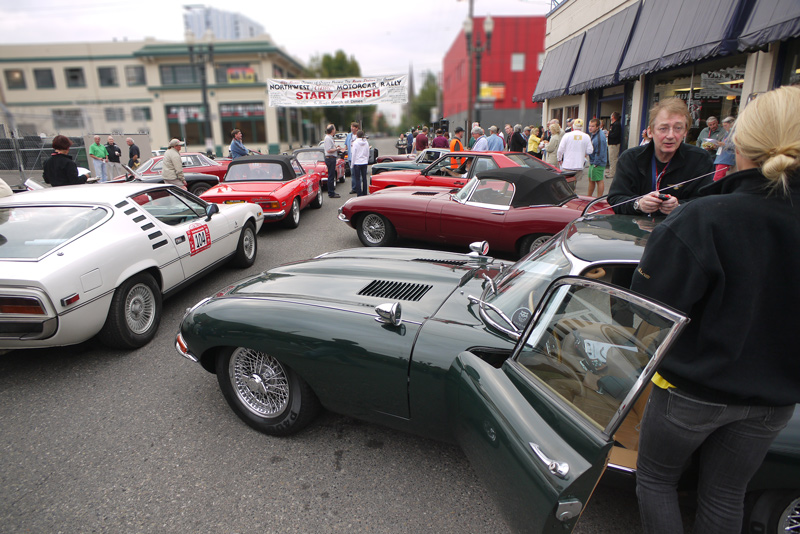
The 2009 Rally begins in at Monte Shelton Jaguar in downtown Portland with much fanfare, flag waving, pomp, and circumstance… but due to our low number (#13 of 50 cars) we miss most of it. Instead we’re following the course’s first transit segment out of Portland south towards Lake Oswego where we’ll be given TSD route instructions. Once armed with the route instructions Dad starts building our pace notes and I do what drivers do when waiting for a start… wander around, chat with other drivers, and try to relax until our start time.
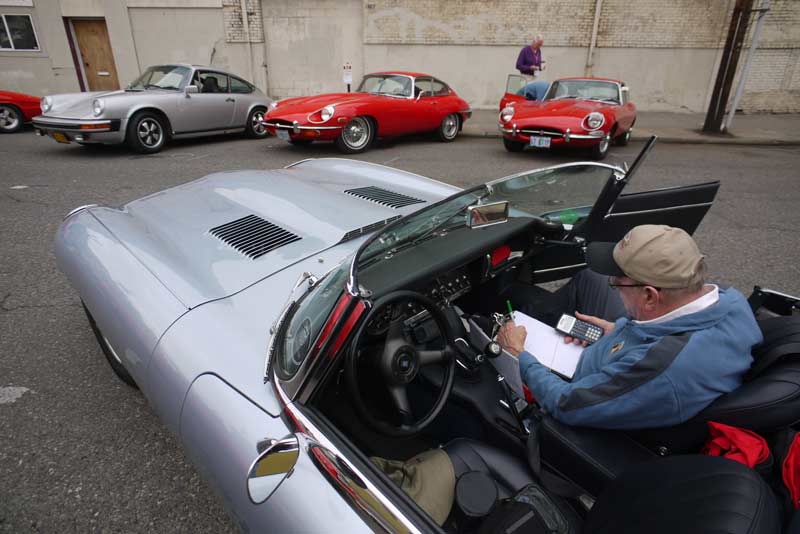
Time arrives for our first TSD segment. After a bit of tricky navigation we settle onto a large 4-lane road going southbound and I ask my navigator how long we’ll be on it. He replies “It looks like we stay on it until the end of this segment.” Then we see rally cars with confused occupants going the other way – never a good sign. Soon after we realize why. Things we should have seen remain unseen and we start trying to figure out where we’ve gone wrong. Dad finds it: we missed a left turn, labeled as “straight as possible” in the route instructions, but we missed it as the main road was in a curve. I drive fast to make up time and near the end of the segment we pass the checkpoint, two minutes and four seconds late. We’ve already missed our start time for the next segment and Dad is giving me instructions rapid-fire as I drive at a hurried pace. About four miles into the second TSD we realize we’re lost… again! We backtrack to the very beginning of the segment and recognize that we went straight at the start rather than right. I drive right at, but not beyond what can be described as “reasonable and prudent” for three short TSD segments. Passing Rally Cars with numbers in the mid-20s at first, and eventually those closer to our own #13. Dad is beside himself and I’m just single-minded on getting us back to our proper position. We know we’re very far behind our time and I keep pushing ahead when I can. We pass a checkpoint, whose course workers are getting a good laugh at our pace, and manage to arrive at a rest stop between segments with a few minutes to spare before our scheduled departure. From here to lunch we stay on-course and on-time on one TSD and a long transit stage.
Sigh. When we’re off, we’re REALLY off.
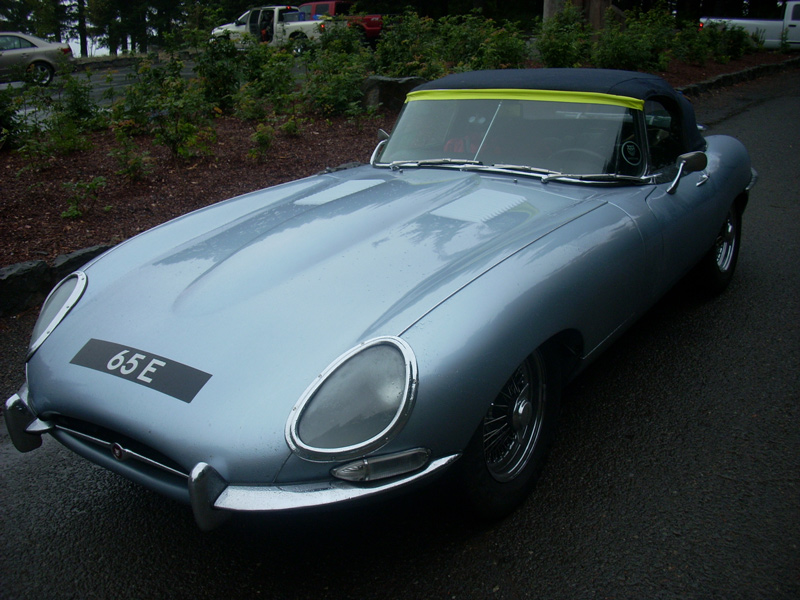
The weather turns all Northwest on us as we ascend Santiam Pass after lunch. The top goes up and I seal it with my usual bright yellow tape. Without this “aftermarket weatherstripping” the top of the windscreen becomes the lip of a waterfall, which pours down upon the driver’s hands and the navigator’s calculations. We’d prefer this trip over the Cascades to be less eponymous of the range, keeping ourselves and our workspaces dry. We arrive in Sisters, Oregon bathed in sunshine and jammed with vintage sports cars drinking gasoline. While waiting in the queue I drop the top, and recalling the rainy weather forecast I retain the yellow tape by applying it to the nose of the car. If it rains I have a pre-sized weather-strip handy.
From Sisters we rally northward on back roads in the area between US 97 and the Cascades through ranches and farms. Two TSD segments bring us to Madras, and finally to our base of operations for the Rally, the Kah-Nee-Tah Resort. We feel pretty good about our performance as it seems Dad & I have gotten back on our game.
Remember the yellow tape from the Jaguar’s top stuck to the nose of the car? All night at dinner I had people asking me “What’s that yellow tape on your car for?” At first I answered truthfully, but as it involves a long explanation after the third time I just started making things up:
“It is holding the headlights on.”
“Oh, that is to increase visibility.”
“Without it the engine falls out.”
“I put it on to confuse people. It is Confusion Tape. It is working!”
I have to admit, this was enjoyable. It became something of a mental exercise to come up with good ones.
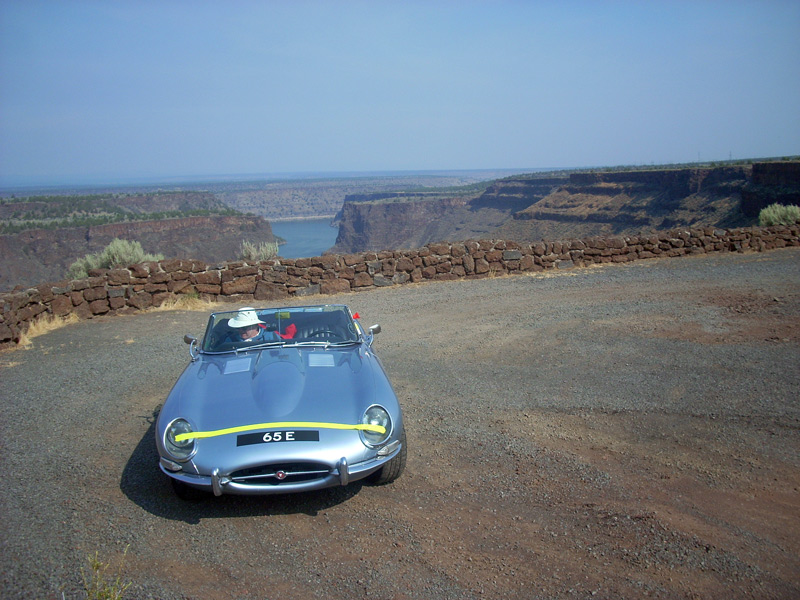
At dinner the day’s results are passed out and we’re in twenty-ninth place out of forty-five cars. We promise ourselves that we’ll do better tomorrow and wander off to bed.
When we’re off, we’re really off.
The next morning we take off for the first segment and about a mile down the highway perform a four-wheel drifting panic-stop and a hard reverse maneuver as we ALMOST miss a turn. Not a great start of Day Two, but we recover in time, and in fact finally fall into our groove. Other than a bit of confusion in the town of Culver, where I’m certain we missed a turn but somehow managed to recover nonetheless, our entire morning seems to go by very well. The afternoon consists of progressively more difficult TSD segments, twisting and turning all over the rolling hills and canyons of north-central Oregon. We stay in our Zen-like Rallying Groove with only a couple of minor errors. At the finish the Jaguar gets the traditional end-of-rally collective car wash, in a party atmosphere complete with a keg of local microbrew.
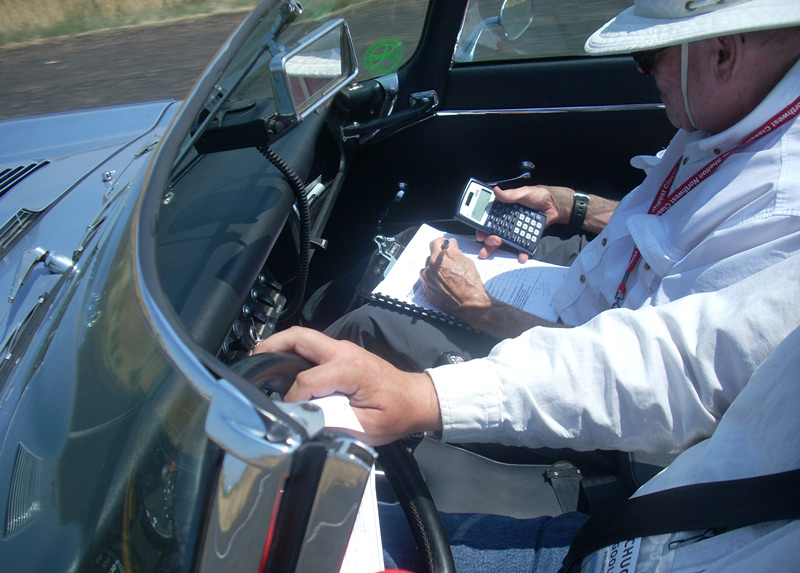
At dinner we hear a talk by racing legend Janet Guthrie, and afterwards hear the Rally results. We have moved up to 19th place (from 29th), collecting a “silver” medal for the effort. Not bad considering! The scoresheets are handed out and they tell a far more intriguing tale. On the 10 TSD’s today we collected the following penalty times: 0:01, 0:00, 0:11, 0:02, 0:02, 0:04, 0:02, 0:02, 0:19, 0:10. That comes to a grand total of 0:53 seconds off the entire day. Only one team did better than us, with 0:27, and they won the whole rally. Only three teams collected less than two minutes of time, and most accrued four minutes or more. If only we could have done as well yesterday! We’d be right in top tier.
Like I said, when we’re off we’re off, but when we’re on, we are really ON!
Sidebar:
The Monte Shelton Northwest Classic Rally is a charity event hosted by the Alfa Romeo Club of Oregon. It generally takes place in early August and is open to any 1981 or older collector car. The rally starts in Portland and travels scenic back roads of the Pacific Northwest. This years’ event had seven Jaguars in attendance. The rally offers a “touring” class for those who wish to participate but not compete. For information and registration visit the Alfa Club’s website at http://www.alfaclub.org





